-
Titolo
-
Motorization and mechanization help the army move faster and hit harder
-
Article Title and/or Image Caption
-
Title: Motorization and mechanization help the army move faster and hit harder
-
extracted text
-
MODERN armies must have speed to
win battles. They must be able to
move quickly from one place to another, to
fight on the run as well as in the trenches,
and to maintain a fast-moving stream of
supplies to front lines. To do all that, they
need motor vehicles by the thousands,
The U. S. Army is no exception. Already
it has close to 200,000 of the vehicles it
needs, and more are being put to work as
fast as they can be made. They range from.
motor cycles and “bantam” cars to 28-ton
tanks and giant high-speed tractors for haul
ing 15-ton guns.
Army men have two terms for describing
the ways in which these vehicles are used.
They are “mechanization”
and ‘“‘motorization.”
Though they are often
misinterpreted by the pub-
lic as denoting the same
thing, these terms actual-
ly have very different
‘meanings.
A “mechanized” unit, in
Army parlance, means one
which is equipped with
armed and armored ves
hicles, such as tanks and
scout cars, with which the
soldiers do their fighting.
In addition it has enough trucks and cars so
that every last man and pound of supplies is
rolling on wheels when the unit is under way.
A “motorized” unit, on the other hand, has
enough trucks, cars, and other vehicles to
transport all its men and equipment right
up to the front lines, but there the men dis-
‘mount and fight on foot while the vehicles
retire to more protected areas. It does not
have many armored vehicles which can go
into action,
In the American Army, the term ‘“ar-
mored” is used almost synonymously with
“mechanized,” 0 that the Armored Force
is really a mechanized force. It also repre-
sents the part of the fighting team of the
nation where the use of vehicles has been
developed to its highest point. It is the
American equivalent of the
“Panzer” and “blitzkrieg”
forces of foreign armies.
Today it has four divisions
organized, though a year ago
it had nome. Within a few
months they will be fully
manned and equipped, which
means that each division will
have 10,097 enlisted men, 600
officers, and more than 3,000
vehicles. A year from mow,
if nothing goes wrong, the
Force will have been expand-
ed to eight divisions.
Each of these divisions has
six times the fire power and
ten times the speed and dis-
tance-covering ability of an
old-style muscle-propelled di-
vision. It can maintain a
speed of 30 miles an hour on
the highways and travel 150
miles in a day, or farther in forced marches.
It goes into action ready to fire 700 tons of
shells and bullets. It is so completely self-
sufficient that it can cover between 300 and
500 miles without receiving any supplies
other than what it carries in its trucks.
With a total weight of 8500 tons of ve-
hicles, it naturally takes a lot of fuel to
move such a division very far. The tanks of
the vehicles alone hold 123,000 gallons of
gasoline and Diesel fuel, the equivalent of 15
railroad tank cars, and 70,000 gallons of
that supply is burned up for every 100 miles
the division travels. That means that to
cover 300 miles, 90,000 gallons of fuel, in ad-
dition to that in the vehicle tanks, must be
carted along with the outfit when it leaves
its base.
Men must be fed as well as engines, even
if a mechanized division does march on
wheels. To accomplish this without inter-
fering with unit's traveling ability, gasoline-
burning ranges are mounted in rolling
Kitchens 8o that the cooks can start prepar-
ing a meal while the soldiers are still under
way.
One important problem which the mech-
anized and motorized outfits share with the
rest of the Army is the training of new men.
In the case of the units that travel on wheels
instead of their feet, however, the problem
is a bit more complicated, as the recruits
must be taught all the principles of soldier-
ing that any trooper must know, and in ad-
dition must be taught to drive and maintain
tanks, trucks, and other vehicles,
The speed with which the Armored Force
recruits are being whipped into shape is a
credit to its commander, Major Gen. Adna
R. Chaffee, and the other officers who were
planning the organization of the Force long
before Congress provided the money to
create it, and to Col. Stephen G. Henry.
Colonel Henry, commandant of the Armored
Force School, at Fort Knox, Ky., startled
officers and men alike in the first World War
by the speed with which he was able to train
American doughboys in France. Now he is
using the same tech-
nique to give Armored
Force recruits their basic
training with the great-
est possible speed.
To eliminate misfits at
the start, Col. Henry uses
simple but effective tests.
Soldiers to be trained as
motor-cycle riders, for
instance, must first prove
that they can ride a bi-
cycle. If they can't do
that, no use wasting time
on them. Soldiers who
want to become Armored
Force radio operators
find themselves with a set of headphones
clamped to their ears before they get any
training at all. If they can recognize cer-
tain groups of signals in the dots and dashes
with which they are bombarded, it's a good
indication that they will be able to pick
‘messages out of the ether even when bounc-
ing along inside a roaring tank, with a
37-mm. or a 75-mm. gun banging away not
far from their heads—and that’s Rot easy.
Teaching of that type, however, is only a
beginning. After they leave the school, the
soldiers get more training in field work.
According to Armored Force officers, it
takes a full year to fit an Armored Force
Soldier into his niche in the fighting machine.
Officers and men alike must learn the im-
portance of working together, and that can’t
be taught in a school. The biggest lesson
that the American Army has learned from
the present war in Europe is the importance
of coperation between the component parts.
of the Army team. Air Corps, artillery, in-
fantry, Armored Force, cavalry, engineers—
all must work together if the Army is to be
effective.
The place of the Armored Force in the
‘picture requires that soldiers of the Force
must learn the technique of the “break-
through”; punching a hole in the enemy line
or swinging around his flank, and raising
hob with his rear-area communication and
supply lines. They must learn that their
branch of the service has a tremendous
striking power, but is weak in holding power.
‘They must learn that if their vehicles try to
operate where the terrain is against them,
as in mountainous country or in marshes,
they may be worse than useless.
The biggest weapons in the ranks of a
fully mechanized or armored, division, are
the medium tanks. Unfortunately, the Army
has comparatively few of these Juggernauts
because when the defense program got uu-
der way there were not enough factories
with facilities to build them. Production was
further held up by design changes made
necessary by developments abroad.
‘When the Armored Force was organized
a year ago, the only medium tanks the Army
posseased were 18.ton jobs. Their heaviest
Weapon was a 37-mm. gun, and thelr armor
plate was not thick enough to stop the shells
of the antitank guns of foreign armies. But
the brutes that will soon be rolling from the
factories, known as M-3s, weigh 28 tons and
carry a 76-mm. gun, backed up by a 37-mm.
and four or more ,30 caliber machine guns.
They have much heavier armor than their
‘predecessors, and travel 30 miles an hour oo
tho highways and between 20 and 50 miles
an hour cross country.
“Next to these in order of size are the light
tanks, which, in spite of their designation,
welgh 12 tons. Now being produced five
times as fast as they were at the beginning
of 1041, these tankn are a good example of
how mechanization has increased the speed
and fire power of the soldiers. A single light
tank has the fire power of 40 Intantrymen.
It mounts a 37-mim, gun which fires a two:
pound high-explosive or armor-plercing
ahell, and four 30 caliber machine guns. The
latter can be taken out of their mounts and
used on the ground if the tank becomes dis-
abled. And the tank can do 45 miles an hour
on the highways, 30 or better across-country.
Both the medium and the ight tanks now
being produced Incorporate all the Improve
ments that the designers could work in.
Some of the items tncluded In these latest
types not found in earlier models are power-
operated turrets, electrically controlled guas,
indirect and periacopic sights, and improved
cold-weather ntarting.
Though the Army has tanks that it con-
siders the equals of any built abroad, it
hasn't stopped experimenting. Recently it
started tests on an elght-wheeled, trackless
vehicle which has been called both a tank
and a pursuit car. According to the manu-
facturer this 10-ton, Diesel-propelied buggy
can travel 80 miles an hour on the highways
and cover 500 or 600 miles without reuel-
ing. Because of low center of gravity and
airplane-type wheel-suspension system it is
supposed to provide a much steadier gun
platform than the conventional type of tank.
‘Some experts In the field of mechanization
believe that the answer to the tank menace
is a tank “destroyer,” the sole purpose of
which would be to attack and destroy enemy
tanks. Such a vehicle as the trackless tank,
fitted with a single 75-mm. gun, might
prove ideal for this type of Aghting. The
manufacturer also states that it could be
used effectively as a mobile gun carrier for
heavy weapons such as antiaircraft guns, or
assault guns.
While the tanks are the heavyweights of
the Armored Force, they are numerically a
small part of the vehicles It uses. An ar-
mored division has only 200 light and 125
‘medium tanks, while there are 702 21j-ton
trucks, 534 motor cycles, and 200 “bantam,”
plus scout cars and other vehicles, in the
same division.
The “bantams,” also known to the soldiers
as “beetlo-bugs” “jeeps,” and by several
other names, are stocky little vehicles only
recently adopted for Army use. Weighing
2,700 pounds fully loaded, they are proving
£0 be effective chore boys in the Armored
Force as well as in other branches of the
service, Powered with 43-horscpower, four-
cylinder, gasoline engines and equipped with
a four-wheel drive, they carry threo men
and & machine gun at 60 miles an hour on
the roads. Their short wheelbase makes
them readily maneuverable at close quarters,
and In cross-country work they can do every-
thing but climb trees. If they get bogged in
‘a mudhole, the crews can usually horse them
back to solid ground and carry on under
their own power. These vehicles have also
proved effective for tow-
ing 37-mm. antitank guns
on two-wheeled carriages.
To simplify the task of
‘maintaining its multiplic-
ity of vehicles, the Ar-
mored Force has gone in
for standardization in a
big way. When the force
was organized, about 35
different types of cars,
trucks, and other wheeled
equipment were found among the units of
artillery, infantry, cavalry, engineers, and
other branches of the service which were
pieced together to form the force.
Now that has been cut to eight principal
types, with a few miscellaneous units such
as wreckers and shop trucks. This means
that when an armored division takes the
road, it will have to carry repair parts for
only eight instead of 35 types of vehicles.
In addition to the eight mechanized or ar-
mored divisions which will be using all this
equipment, the Army already has one mo-
torized infantry division, and is planning to
motorize four more within the next year. If
the factories keep on turning out the guns,
tanks, and trucks, the Army has no doubt
that it can build just as good a fighting ma-
chine as any it may run up against.
-
Autore secondario
-
David M. Stearns (article writer)
-
Lingua
-
Eng
-
Data di rilascio
-
1941-08
-
pagine
-
74-80
-
Diritti
-
Public domain
-
Archived by
-
Sami Akbiyik
 Screenshot_1.png
Screenshot_1.png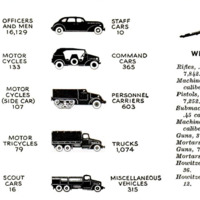 Screenshot_2.png
Screenshot_2.png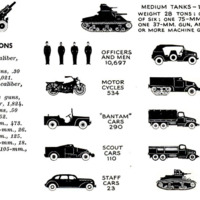 Screenshot_3.png
Screenshot_3.png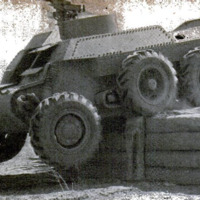 Screenshot_4.png
Screenshot_4.png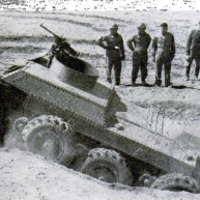 Screenshot_5.png
Screenshot_5.png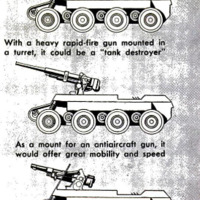 Screenshot_6.png
Screenshot_6.png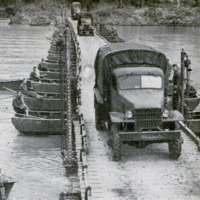 Screenshot_7.png
Screenshot_7.png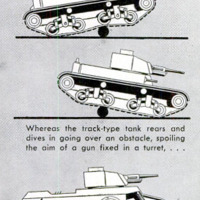 Screenshot_8.png
Screenshot_8.png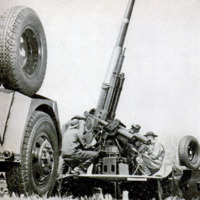 Screenshot_9.png
Screenshot_9.png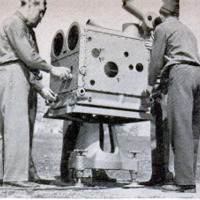 Screenshot_10.png
Screenshot_10.png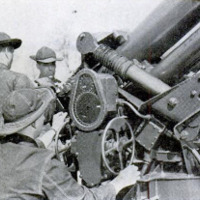 Screenshot_11.png
Screenshot_11.png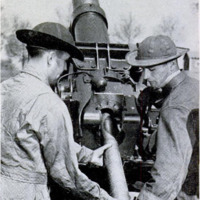 Screenshot_12.png
Screenshot_12.png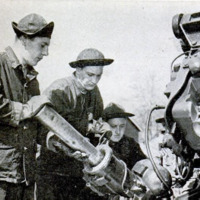 Screenshot_13.png
Screenshot_13.png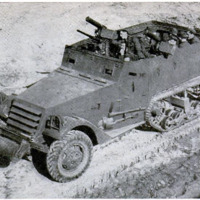 Screenshot_14.png
Screenshot_14.png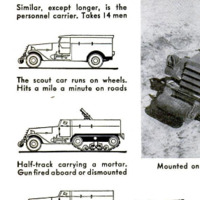 Screenshot_15.png
Screenshot_15.png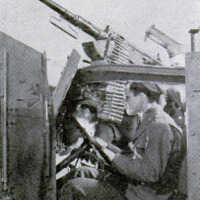 Screenshot_16.png
Screenshot_16.png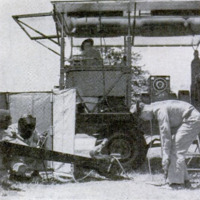 Screenshot_17.png
Screenshot_17.png















